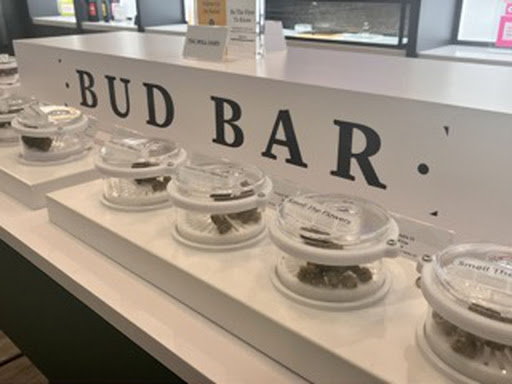How To Identify High-Quality Cannabis Flower
A lab report is the best way to identify whether your cannabis is safe to consume and the product contains what it claims on the label. Aside from that important documentation, you can identify high quality cannabis through a series of visual checks and similar analyses. Whether you’re a processor examining your final product or a consumer looking for the best possible cannabis to buy in a dispensary, the ability to identify quality cannabis products is an important skill.
In this blog, you will learn:
What to look for to determine cannabis quality
Indicators of high quality cannabis
Why cannabis quality matters
How to know if your cannabis is high quality
When it comes to determining the quality of your cannabis, there are a few quick tests you can perform that involve nothing more than your own senses.
1. Observe
Look at the cannabis carefully. High-quality flower will generally have vibrant colors and a “glistening” look. While cultivars vary in color – you can expect to see greens, of course, but purple and orange are common – the vibrancy of the color is an indication of overall plant health. It also suggests the cannabis was properly dried and cured. Brown, tan, or yellow cannabis flower is likely overly dried out and of lower quality.
While examining the color, be on the lookout for thicker stems or seeds scattered throughout. This can be an indicator that the cannabis does not contain as much consumable material as its weight or size conveys.
The frosty appearance of cannabis flower is thanks to dense, compound-rich trichomes, the resin glands of the plant. Trichomes contain most of the phytocannabinoids and terpenes that interact with the human endocannabinoid system (ECS). These trichomes should be milky white in their appearance, creating a snow-like layer around the flower. Reddish-brown or orange trichomes indicate that much of the cannabinoids are degrading or have degraded. This indicates lower quality.
You might not always have to rely on the naked eye alone for your observation test. In some dispensaries, flower may be kept in a container that includes a small magnifying glass or viewport. If available, use this to get an even closer look at the flower and its trichomes.
The Bud Bar is an example of the type of station. Here, it is used at the Apothecarium adult-use dispensary in Maplewood, N.J. Image courtesy of NJ.com
2. Smell
The distinct smell of cannabis can help you determine if it is fresh. Properly cured cannabis will still contain most of the terpenes, aromatic volatile organic compounds that are among the first to degrade. Quality cannabis flower contains significant amounts of these terpenes, and your nose can tell the difference. Cannabis that has a strong scent is likely fresher and higher quality than cannabis that does not give off much of a smell at all. That is because terpenes evaporate off flower quickly and easily; the older the cannabis flower, the fewer terpenes it is likely to contain.
Additionally, a musty or noxious smell is a signal that the cannabis flower has been colonized by microbes, such as mold. Stay away from any cannabis that smells like this, especially if you notice visible signs of mold or mildew growing on the plant material. To learn more about identifying microbial contamination, read our guide to how to spot mold on cannabis.
3. Touch
Finally, handling the cannabis with your bare hands is helpful when trying to determine its overall quality. You cannot touch cannabis flower in the dispensary before buying it, so this test is best conducted at home.
Fresh, potent cannabis will easily break apart, but it will not be brittle or crumbly as it is handled. Instead, the flower should be slightly sticky while still breaking down into smaller pieces with ease. If it is very difficult to break apart the flower, that could also be a sign it was not dried or cured properly. Without proper drying and curing, microbial contamination could occur. A happy medium is key here.
Additionally, high quality cannabis is relatively dense, with the notable exception of freeze dried or similarly treated cannabis. Dense cannabis signals a healthy growing environment which results in a high yield and quality. And while some strains do produce lighter, fluffier buds naturally, these should still look thick and full. Thin buds or those with a great deal of stems and seeds tend to be low quality.
The role of laboratory testing in evaluating quality cannabis
While these tactile experiences are a good way to gauge the overall quality of cannabis flower, the best way to know precisely what is in your cannabis is to review the laboratory testing results.
One of the biggest benefits of the regulated cannabis industry is that all products must meet certain quality standards before they can be sold on the market. Best of all, the test results from third-party laboratory testing is typically available to the public, so you can use this information to validate your expectations about quality.
Generally, test results are available at the dispensary upon request. Sometimes, they are also available on the labeling or packaging a cannabis product comes in, which might feature the batch number and testing date or a QR code that links directly to the test results.
When examining third-party lab testing results for cannabis products in New Jersey, you can expect to see information about the following:
Phytocannabinoid profile
Terpene profile
Pesticides
Heavy metals
Microbials
Residual solvents
Mycotoxins
Water activity
Foreign materials
To learn more about what to expect when reading lab testing results, read our guide on how to read a certificate of analysis.
How to preserve cannabis quality
If you purchase high-quality cannabis flower or a manufactured cannabis product, there are several steps you can take to preserve it and increase its shelf life. Well-preserved cannabis products will retain their potency and will be protected from potential contaminants, keeping them fresh for consumption for up to months at a time.
To make sure your cannabis retains its quality, take the following steps:
Use an airtight container. When you first bring your cannabis home from the dispensary, remove it from the packaging it came in and place it into an airtight container. Generally, glass is considered one of the best types of containers to use.
Store in a dark environment. When stored in an airtight glass jar, cannabis can still degrade when subjected to direct light, particularly UV light. To avoid this, store the container in a dark environment. Alternatively, you could cover the outside of the container with something that blocks light.
Keep conditions cool and dry. The conditions both inside and outside your airtight container should be cool and dry. Heat and humidity not only serve to degrade the potency of cannabis more quickly, they also invite the reproduction of contaminants like mold or mildew.
Only handle to consume. The more you handle your cannabis, the more likely it becomes contaminated, so avoid doing so unless you are taking it out of its container to consume it. Avoid the temptation to show off your high-quality flower to your friends, because doing so may only serve to diminish that quality.
Confirming cannabis quality with visual and laboratory checks
While the tips above are useful to examine the quality of cannabis flower in a pinch, the best way to know for sure is by reviewing third-party cannabis laboratory testing results. As the legal cannabis industry expands, these testing results have become even more accessible, arming consumers with the most valuable tool of all: information.
True Labs for Cannabis is dedicated to serving both cannabis producers and consumers by providing the most precise data available on what exactly is in cannabis flower and infused products. To get a clearer picture of the quality of your cannabis, consult laboratory test results on the legally-required certificate of analysis every producer must secure before selling their products.


